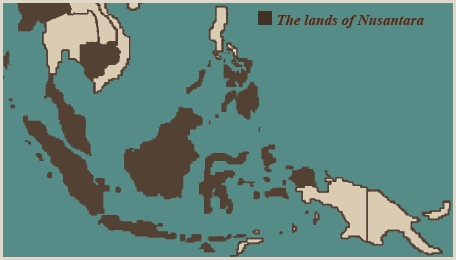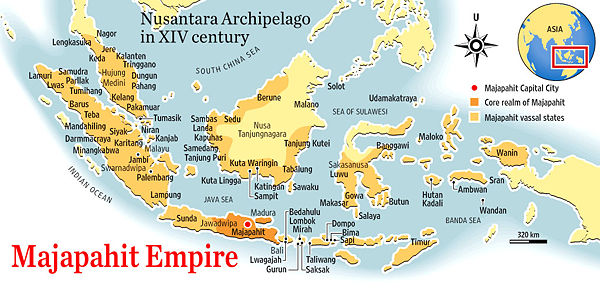Salam semua!
Seperti yang dijangka,selepas Raja Petra keluarkan poin-poin beliau tentang Melayu bukan pendatang,semua ultrakiasu terus keluar penyakit kiasu mereka macam virus H1N1.Sehinggakan Raja Petra pun pelik dan hairan mengapa golongan ini yang mana sebelum ini selalu menyokong beliau berubah 360 darjah menghentam dan memakihamun beliau.
Baca sini dulu>> http://halamansrikandi.blogspot.com/2014/11/the-malays-are-not-pendatang-part-1.html
Mari kita saksikan bahagian kedua.
enjoy!
link sini>> http://www.malaysia-today.net/the-malays-are-not-pendatang-part-2/
Malays are an ethnic group of Austronesian people predominantly inhabiting the Malay Peninsula, eastern Sumatra, southernmost parts of Thailand, south coast Burma, island of Singapore, coastal Borneo including Brunei, West Kalimantan, and coastal Sarawak and Sabah, and the smaller islands which lie between these locations — that are collectively known as the Alam Melayu.
NO HOLDS BARRED
Raja Petra Kamarudin
I received many abusive messages from mainly Chinese in response to my previous article, ‘The Malays are not pendatang’ (READ HERE). None of them rebutted what I wrote with their own thesis. They just cursed me. Although some said they did not agree with what I wrote, they did not offer their own thesis as to what they think is the correct version of Malay history.
From the comments these people made, I can see that many Chinese are of the opinion that the Malay Peninsula from the Isthmus of Kra down to the island of Singapore was a deserted strip of land, inhabited by just a few Aborigines or Orang Asli, and that the Indonesians from Java, Sumatra, etc., sailed across the Straits of Melaka to settle in what is now known as Malaysia.
I suppose this assumption would be true if we are talking about Australia. But the Malay Peninsula was not a deserted strip of land inhabited by just a few Aborigines or Orang Asli. However, if you have any academic research to prove this, I would welcome your contribution to this debate. Meanwhile, maybe you can read what other scholars have to say about the issue.
********************************************************
Nusantara is an Indonesian term for the Indonesian archipelago. It originated in Old Javanese and literally means ‘archipelago’. In Malay, Nusantara bears the meaning of Malay World, and predates the modern state of Indonesia.
Today, in Bahasa Indonesia, Nusantara is synonymous with the Indonesian Archipelago or the national territory of Indonesia. In this sense the term Nusantara excludes Malaysia, Singapore, Brunei and the Philippines. In Bahasa Malaysia, this term is synonymous and often interchangeable with Malay Archipelago or Malay realm (in Malay: Alam Melayu), which includes those countries and the Philippines.
Malays (Melayu Jawi: ملايو) are an ethnic group of Austronesian people predominantly inhabiting the Malay Peninsula, eastern Sumatra, southernmost parts of Thailand, south coast Burma, island of Singapore, coastal Borneo including Brunei, West Kalimantan, and coastal Sarawak and Sabah, and the smaller islands which lie between these locations — that are collectively known as the Alam Melayu. These locations today are part of the modern nations of Malaysia, Indonesia, Singapore, Brunei, Burma and Thailand.
There is considerable genetic, linguistic, cultural, and social diversity among the many Malay subgroups, mainly due to hundreds of years of immigration and assimilation of various regional ethnicity and tribes within Maritime Southeast Asia. Historically, the Malay population is descended primarily from the earlier Malayic-speaking tribes that settled in the region, who founded several ancient maritime trading states and kingdoms, notably Brunei, Old Kedah, Langkasuka, Gangga Negara, Old Kelantan, Negara Sri Dharmaraja, Malayu and Srivijaya, and the later Cham and Mon-Khmer settlers.
Throughout their history, the Malays have been known as a coastal-trading community with fluid cultural characteristics. They absorbed numerous cultural features of other local ethnic groups, such as those of Minang, Acehnese, and to some degree Javanese culture. However, Malay culture differs by being more overtly Islamic than the multi-religious Javanese culture.
Ethnic Malays are also the major source of the ethno-cultural development of the related Betawi, Banjar, Cape Malay, Peranakan and Sri Lankan Malay cultures, as well as the development of Malay trade and creole languages like Ambonese Malay, Baba Malay, Betawi Malay and Manado Malay.
Malayo-Polynesian, also called Austronesian, is a family of languages extending from Madagascar to the central Pacific, including Malagasy, Malay, Indonesian, Tagalog, and Polynesian.
(1) Echols, John M.; Shadily, Hassan (1989), Kamus Indonesia Inggris (An Indonesian-English Dictionary) (6th edition ed.), Jakarta: Gramedia, ISBN 979-403-756-7
(2) Friend, T. (2003). Indonesian Destinies, Harvard University Press, p. 601. ISBN 0-674-01137-6.
(3) Milner, Anthony (2010), The Malays (The Peoples of South-East Asia and the Pacific), Wiley-Blackwell, ISBN 978-1-4443-3903-1
(4) Barnard, Timothy P. (2004), Contesting Malayness: Malay identity across boundaries, Singapore University press, ISBN 9971-69-279-1


Ulasan: bila dah tak dapat dapat nak berhujah atau memang dia salah,apa yang ultrakiasu ni buat adalah makihamun.Itulah dia yang dinamakan 'moron'.
Biarkan si moron terjun dengan labu-labunya,biarkan!biarkan!
:D
~Cik Seri









